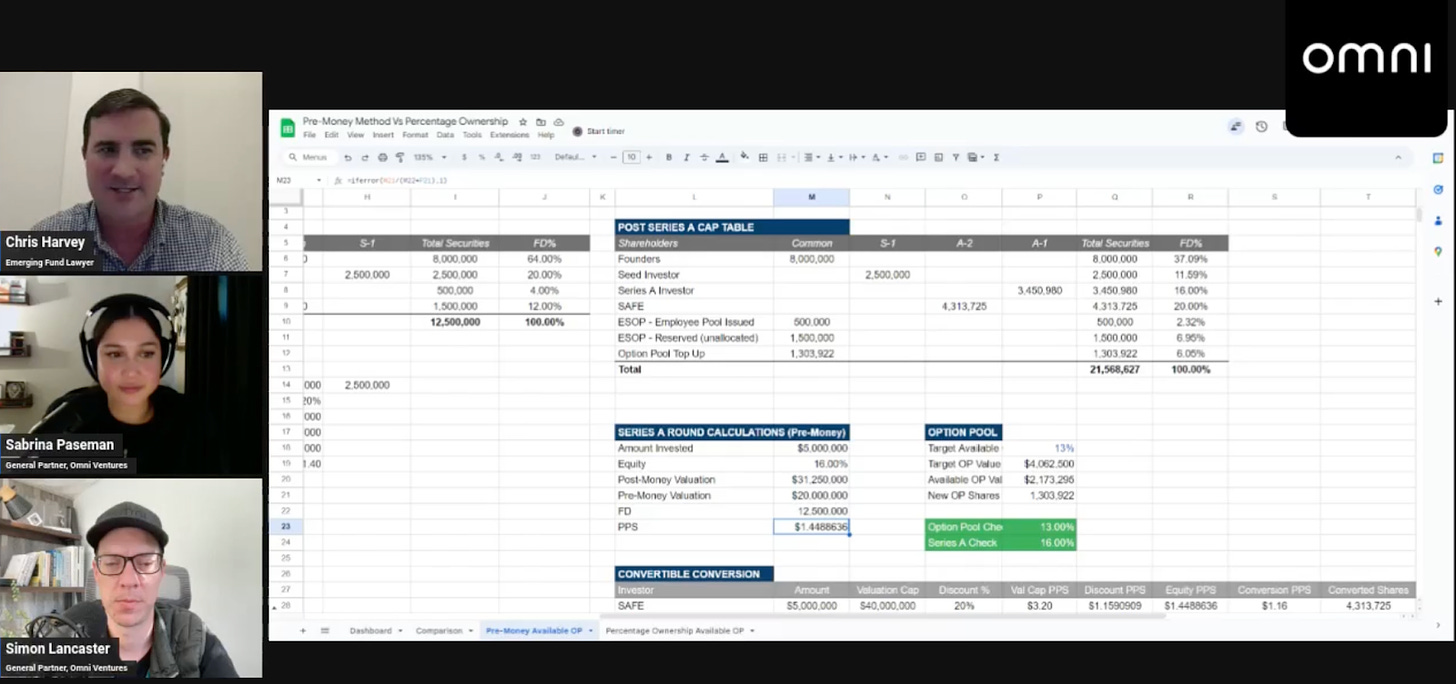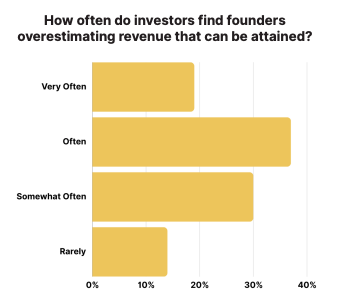Down Round Dilution
This week we cover founder dilution in a down round, simplifying product ideas, and a strategy to optimize time with a VC.
Greetings! It’s hard to believe next week is Thanksgiving in the U.S.! In light of that, we will be pausing this newsletter for the next two weeks (slow news cycle!) but will be back in your inbox on December 8th.
🔦 Navigating Down Rounds
The Omni Ventures team interviewed Chris Harvey, a lawyer specializing in Seed and Series A deals. The discussion starts with an example of a Series A term sheet and the impact certain sections have on founder dilution. Then, Chris does a screenshare and shows how dilution plays out in a down round by using a spreadsheet to track the mechanics of how this works. The conversation wraps up with some negotiation tips for founders to help them minimize dilution in a down round.
STV Take: The example of a down round given in this video is one that is probably familiar for some mature Seed companies—raised a pre-Series A round on a SAFE with a valuation cap higher than what is market rate for Series A valuations. It’s a great reminder of how being too focused on taking the highest valuation can have detrimental effects for subsequent rounds.
As the walk-through demonstrates, a down-round situation is tricky for a new investor. If a Seed company is in this position, the business needs to be doing exceptionally well to successfully raise a Series A. These investors are spoiled for choice right now and need a very compelling reason to do this work.
🌀 Complicated Product Ideas
Andrew Chen, General Partner at Andreesen Horowitz, writes about the product explanation complexity scale. On one end of the scale is what constitutes a simple and easy to understand product explanation; the other end is what he calls the “Double WTF” or the ultra complicated product description that takes forever to get to the point of what is being built today. If founders find themselves on the “WTF” end of the description spectrum, Andrew recommends showing the product to customers and asking how they would describe it. The feedback a founder gets from this will be instrumental in stripping out founder bias and creating a good launch pad for a simpler description.
“Often times, you will dislike what you hear. Because it strips out all of your strategic differentiation, and just describes what is in front of them. Or perhaps because it doesn't capture the technical ‘wow’ of what's under the hood. Sorry, this is the unvarnished truth of your product even if it's painful.”
– Andrew Chen on how customers are likely to describe a product
STV Take: In communication, it is the responsibility of the sender (in this case, the founder) to succinctly articulate a message (the product idea). If the message isn’t clear to the receiver (the investor), it’s the sender’s problem.
Too often, I see founders get frustrated when investors don’t understand what they’re building, but clear communication is a key part of a founder’s job. When an investor encounters a founder that can’t simply articulate what a product does, it raises a red flag because it creates a layer of friction in attracting other investors, early employees, and customers. Time is precious and people don’t have the means or desire to weed through complicated verbiage to understand a product.
🧭 A Guide to Optimizing Financial Performance
AVL Growth Partners released a new guide that highlights the key three financial drivers of a startup, along with recommendations to help founders avoid common financial modeling pitfalls and the best way to project business growth. A few of the common mistakes AVL Growth discusses in this guide include:
Overestimating attainable revenue
Misunderstanding how quickly revenue can grow related to COGs
Underestimating customer acquisition cost
STV Take: Investors understand that a company’s revenue expectations and growth projections presented in a pro forma are educated guesses at best and shots in the dark at worst. Investors can sniff out the latter. While uncertainty is inevitable regarding early revenue growth, there are techniques and best practices founders can use to generate a solid understanding of their cost drivers and present realistic expectations for potential revenue growth. AVL Growth’s latest guide offers valuable tips to help founders craft the best version of their pro forma. (Sponsored)
❓Questions for VCs
A Crunchbase article by Rachel Sheppard of Mars Petcare highlights four key questions founders can use to optimize their time with an investor. They include asking for pitch deck advice, opinions, resources, and how the founder can be helpful.
“[T]he most fruitful post-pitch Q&A’s are collaborative conversations.”
STV Take: There are certainly times and places for hard pitching, but framing the initial investor call as a conversation versus a pitch can change the dynamic. It can help mitigate nerves, allowing founders to feel more comfortable. By asking questions, it’s easier to build rapport with investors (or not, which is good to understand early in conversations) and understand how they think about the world.
Plus, having a conversation is just more fun for both investors and founders. Think about the time you were on the receiving end of a sales call. Which structure was more enjoyable, the one where the salesperson pitched you for 30 minutes straight or the one that was more of a discussion?





